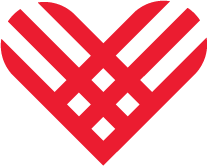Rewriting the Story
Lived experiences of New Yorkers receiving cash assistance
All New Yorkers deserve to live with dignity, but this remains vastly out of reach for so many individuals and families across our state. Today, nearly two out of five households in New York are struggling just to get by, unable to afford basic needs like rent, food, and child care. Our new report sheds light on this reality by centering the experiences of New Yorkers on cash assistance. Rewriting the Story shares findings from 32 in-depth interviews and a statewide survey that we conducted with New Yorkers who receive cash assistance, many of whom meet the federal government’s definition of “deep poverty” and face serious barriers to economic mobility.
Read Analysis
Read Analysis
Read OnPolicy Reforms
Explore Our Policy Recs
Read OnWho we interviewed
Who we interviewed
Read OnBy the Numbers
By the Numbers
Read OnKey Findings
Key Findings
Read OnKey Findings
- 1. Participants typically turn to cash assistance as a last resort after experiencing a significant life event, an unexpected crisis, or because of an illness or disability.
- 2. Participants face a myriad of access and retention barriers.
- 3. Participants are struggling to meet their basic needs while receiving cash assistance and are unable to build long-term economic security.
- 4. Participants have experienced or are currently experiencing several other challenges that have caused or exacerbated their current financial hardship.
- 5. Participants face serious barriers to work.
- 6. Participants expressed fear of benefits cliffs.
- 7. Participants spoke about the impact of stigma.
- 8. Participants spoke about the goals they have for themselves and their families and their hopes for the future.
A Call for Bold Policy Reform
While policies to improve and expand cash assistance and other income supports must work in tandem with broader, structural policy changes that promote racial and economic justice, there are a few immediate steps the state should take to deliver relief to New Yorkers receiving cash assistance:
Increase cash assistance to deliver immediate relief to New Yorkers with the lowest incomes
The state should follow the recommendation of the Governor’s Child Poverty Reduction Advisory Council and pass a 100% increase in cash assistance and index to inflation going forward (106/ S.1127). Second, the state should pass A.108/S.113, which would raise the personal needs allowance and special needs allowance for homeless New Yorkers. Notably, the Council has also recommended that New York eliminate resource limits, expand the availability of earned income disregards, and eliminate durational work requirement sanctions around the state, all policies supported by the findings in our report.
Improve access and retention to cash assistance by implementing People-Centered and Trauma-Informed practices
Our 2023 report, Caught in the Gaps, and accounts from participants in this report detail the persistent barriers to access and maintain cash assistance. To take a closer look at solutions to address this, FPWA, in partnership with a Capstone team from New York University’s Wagner Graduate School of Public Service, conducted a thorough analysis of access and retention barriers in the program and explored how implementing People-Centered and Trauma-Informed (PCTI) practices can help alleviate these barriers. The recommendations from this analysis include offering comprehensive case management, revamping social services offices to reflect PCTI approach, improving staff training, and establishing an ongoing process for people with lived experience, advocates, and other key stakeholders to provide input on policies and procedures. This set of recommendations would not only be advantageous from an administrative perspective but would also ensure a level of dignity and empathy for those seeking assistance.
Build a more equitable cash program and center people with lived experience
Passing these existing pieces of legislation and implementing a PCTI approach would be a step forward, but there is more work to do to shift away from the punitive design of the cash assistance program that has long reinforced racial and gender inequities to one that is focused on equity and responding to the unique needs of each individual and family. To do so, we must move cash assistance in the direction of an unconditional cash transfer program so it can help provide a basic standard of living for everyone, a foundation upon which to build long-term economic security. We echo the recommendations in Caught in the Gaps to end arbitrary conditions of assistance, like ending time limits and restrictions on immigrant families, eliminating the asset limit, expanding the definition of work at the state level or eliminating the work requirement altogether at the federal level, and expanding eligibility. Finally, we must center people with lived experience in policy changes. As our report demonstrates, people with lived experience have a wealth of knowledge and perspective. And when their lived experiences are centered, we can begin to tell a different story and envision a more just future.
The Numbers
40%
Nearly two out of five households in New York are struggling just to get by, unable to afford basic needs like rent, food, and child care.
46%
46% of Americans don’t have $500 in savings.
65%
65% of Americans often considered “middle class” are struggling financially and don’t expect that to change for the remainder of their lives.
Stay in Touch
Join our network and learn about FPWA events and news.
All rights reserved.
LEARN MORE
ABOUT FPWA
GET INVOLVED
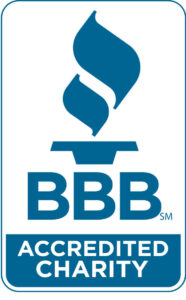







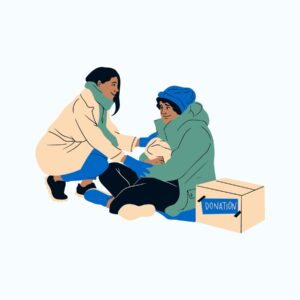 Kadisha said that applying for cash assistance required a lot of paperwork. When she recertified, she was told her documentation got “lost,” and the timeframes for recertification changed all the time, which was confusing to her. In 2019, Kadisha had a job at the YMCA where she was working less than 20 hours per week and making under $15 an hour. HRA reduced her cash assistance, saying that she was making too much money. She said she always did the math to determine how her earnings would impact her benefits. She worked many different jobs while on cash assistance, all of which she found on her own. She did not find HRA’s workshops and other programs useful and said it would have been helpful if they were more tailored to her interests. Now, all her money goes to bills, and she doesn’t have savings. She has credit card debt and student loan debt. As for the future, she dreams of being a performer and wants to continue to be an advocate for New Yorkers experiencing homelessness.
Kadisha said that applying for cash assistance required a lot of paperwork. When she recertified, she was told her documentation got “lost,” and the timeframes for recertification changed all the time, which was confusing to her. In 2019, Kadisha had a job at the YMCA where she was working less than 20 hours per week and making under $15 an hour. HRA reduced her cash assistance, saying that she was making too much money. She said she always did the math to determine how her earnings would impact her benefits. She worked many different jobs while on cash assistance, all of which she found on her own. She did not find HRA’s workshops and other programs useful and said it would have been helpful if they were more tailored to her interests. Now, all her money goes to bills, and she doesn’t have savings. She has credit card debt and student loan debt. As for the future, she dreams of being a performer and wants to continue to be an advocate for New Yorkers experiencing homelessness.
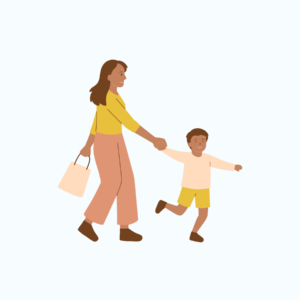 Amy lives with her 4-year-old son, who has autism and is non-verbal. Before receiving cash assistance, she was a case manager at a nonprofit earning $40,000 annually. When she got pregnant, she switched to a secretary job and took a pay cut to $35,000 so that she would not have to travel during her pregnancy. She then decided to leave her child’s father, but after becoming a single parent, she could not afford child care and eventually lost her job. She later tried to get a part-time job, but it was a “nightmare” trying to get HRA to sign off on her work timesheet so she could get the child care subsidy. After she finally got the issue resolved, HRA sent a letter saying that now that she was working, her cash assistance and SNAP were getting cut. She felt “stuck” because she wanted to work, but she needed benefits to help her get by day to day.
Amy lives with her 4-year-old son, who has autism and is non-verbal. Before receiving cash assistance, she was a case manager at a nonprofit earning $40,000 annually. When she got pregnant, she switched to a secretary job and took a pay cut to $35,000 so that she would not have to travel during her pregnancy. She then decided to leave her child’s father, but after becoming a single parent, she could not afford child care and eventually lost her job. She later tried to get a part-time job, but it was a “nightmare” trying to get HRA to sign off on her work timesheet so she could get the child care subsidy. After she finally got the issue resolved, HRA sent a letter saying that now that she was working, her cash assistance and SNAP were getting cut. She felt “stuck” because she wanted to work, but she needed benefits to help her get by day to day. Tarajee lives with her three younger children, and she has three adult children. Having been on and off cash assistance for about 30 years, she originally applied when she was first married and pregnant at 18 years old. Since then, she has had an open case approximately 10 times for different reasons. One of the times, she was experiencing domestic violence with her older children’s father, and she needed help. She said she always made sure to “do something with [herself]” while receiving benefits. At one point, she worked as a home health aide to fulfill the program’s work requirements. The job didn’t last, because the daycare wouldn’t keep her kids longer than four hours a day. Tarajee has also been through several Fair Hearings to resolve issues with her cash assistance case, which she described as intimidating and time-consuming. She requested one after being cut off from cash assistance without warning and another because she was getting just $109 every two weeks for four kids.
Tarajee lives with her three younger children, and she has three adult children. Having been on and off cash assistance for about 30 years, she originally applied when she was first married and pregnant at 18 years old. Since then, she has had an open case approximately 10 times for different reasons. One of the times, she was experiencing domestic violence with her older children’s father, and she needed help. She said she always made sure to “do something with [herself]” while receiving benefits. At one point, she worked as a home health aide to fulfill the program’s work requirements. The job didn’t last, because the daycare wouldn’t keep her kids longer than four hours a day. Tarajee has also been through several Fair Hearings to resolve issues with her cash assistance case, which she described as intimidating and time-consuming. She requested one after being cut off from cash assistance without warning and another because she was getting just $109 every two weeks for four kids. Courtney, a mom to three children, had been working as a Direct Support Professional, helping her clients with daily tasks. But after a car accident, Courtney lost all but one of her clients because she was unable to travel to their homes. She walked four miles to her last client’s house, who later passed away, which devastated her. Without a car, she was out of work, so she applied for cash assistance. Courtney has had both good and bad experiences with the workers at her social services office. She described one caseworker as “rude,” but she was assigned to a new worker who went “over and beyond” in helping her apply for SSI. (She was denied, even though she had brain surgery in 2021, and her doctors supported her application.) Courtney has also been subject to the work requirements, but she had trouble finding child care, and the work didn’t lead to a full-time job. Now, though her health is declining, she is looking for a remote job and is doing caretaking work for a neighbor for free. She also receives SNAP and a small amount of child support, but social services takes most of it. She shops in the clearance aisle, buys the cheapest toilet paper, and takes napkins from McDonald’s. She hasn’t been able to save, and she has debt. She only goes to food pantries when she really needs it, because she’d rather the food go to someone else. Her kids want to go to the Boys & Girls Club, but it costs $15 per year for each child, and she can’t afford that.
Courtney, a mom to three children, had been working as a Direct Support Professional, helping her clients with daily tasks. But after a car accident, Courtney lost all but one of her clients because she was unable to travel to their homes. She walked four miles to her last client’s house, who later passed away, which devastated her. Without a car, she was out of work, so she applied for cash assistance. Courtney has had both good and bad experiences with the workers at her social services office. She described one caseworker as “rude,” but she was assigned to a new worker who went “over and beyond” in helping her apply for SSI. (She was denied, even though she had brain surgery in 2021, and her doctors supported her application.) Courtney has also been subject to the work requirements, but she had trouble finding child care, and the work didn’t lead to a full-time job. Now, though her health is declining, she is looking for a remote job and is doing caretaking work for a neighbor for free. She also receives SNAP and a small amount of child support, but social services takes most of it. She shops in the clearance aisle, buys the cheapest toilet paper, and takes napkins from McDonald’s. She hasn’t been able to save, and she has debt. She only goes to food pantries when she really needs it, because she’d rather the food go to someone else. Her kids want to go to the Boys & Girls Club, but it costs $15 per year for each child, and she can’t afford that.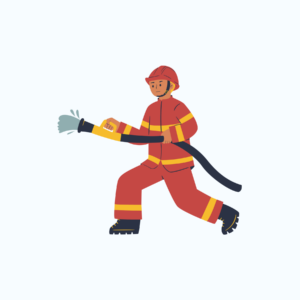 Samuel, a former firefighter, currently has cancer and a skin disease called hidradenitis. Unable to work because of his cancer diagnosis, Samuel moved back home to Buffalo for medical treatment and applied for cash assistance. Samuel described the experience of applying as “terrible.” He is a Black man, and he said he experienced racism and harassment from staff. It also took 45 days for him to receive his benefits. While he initially started applying for cash assistance by himself, social services gave him such a hard time that an advocate had to step in to help him, and his case finally moved along. While social services paid his rent for about $400 per month, Samuel only received $24 in cash assistance for the entire month. It was very difficult, and he couldn’t afford things like personal hygiene items or clothing. To get by, he had to rely on other organizations in the Buffalo area, which helped him with all types of needs, from food and clothing to a security deposit and the first month’s rent for his apartment.
Samuel, a former firefighter, currently has cancer and a skin disease called hidradenitis. Unable to work because of his cancer diagnosis, Samuel moved back home to Buffalo for medical treatment and applied for cash assistance. Samuel described the experience of applying as “terrible.” He is a Black man, and he said he experienced racism and harassment from staff. It also took 45 days for him to receive his benefits. While he initially started applying for cash assistance by himself, social services gave him such a hard time that an advocate had to step in to help him, and his case finally moved along. While social services paid his rent for about $400 per month, Samuel only received $24 in cash assistance for the entire month. It was very difficult, and he couldn’t afford things like personal hygiene items or clothing. To get by, he had to rely on other organizations in the Buffalo area, which helped him with all types of needs, from food and clothing to a security deposit and the first month’s rent for his apartment. Halle and her kids live with her 76-year-old mother, who owns the home. Halle has been unable to work since September of 2022, when she fell and injured herself while working as a preschool teacher. This resulted in persistent knee and back pain. Inconsistent access to health insurance has hampered her physical therapy and pain management efforts. She was earning about $70,000 per year as a teacher, and after her injury, the Department of Education gave her a one-time lump sum of $19,000 in disability benefits. She applied for cash assistance when that ran out, because she still wasn’t able to go back to work. After her accident, she was so sad because she knew she was going to miss working with her students. Early childhood education had always been her passion. But after 20 years, she was physically unable to do the job. She knew she needed to apply for public benefits: “What else could [I] do?”
Halle and her kids live with her 76-year-old mother, who owns the home. Halle has been unable to work since September of 2022, when she fell and injured herself while working as a preschool teacher. This resulted in persistent knee and back pain. Inconsistent access to health insurance has hampered her physical therapy and pain management efforts. She was earning about $70,000 per year as a teacher, and after her injury, the Department of Education gave her a one-time lump sum of $19,000 in disability benefits. She applied for cash assistance when that ran out, because she still wasn’t able to go back to work. After her accident, she was so sad because she knew she was going to miss working with her students. Early childhood education had always been her passion. But after 20 years, she was physically unable to do the job. She knew she needed to apply for public benefits: “What else could [I] do?”